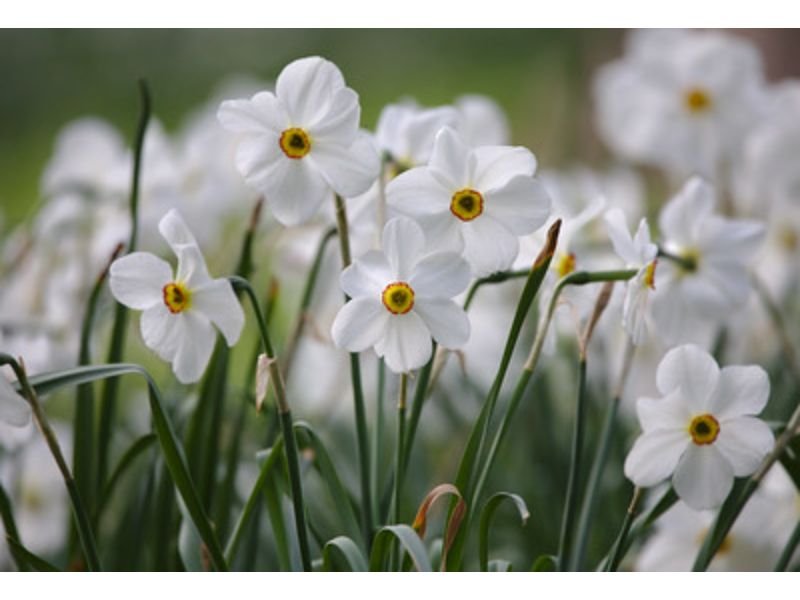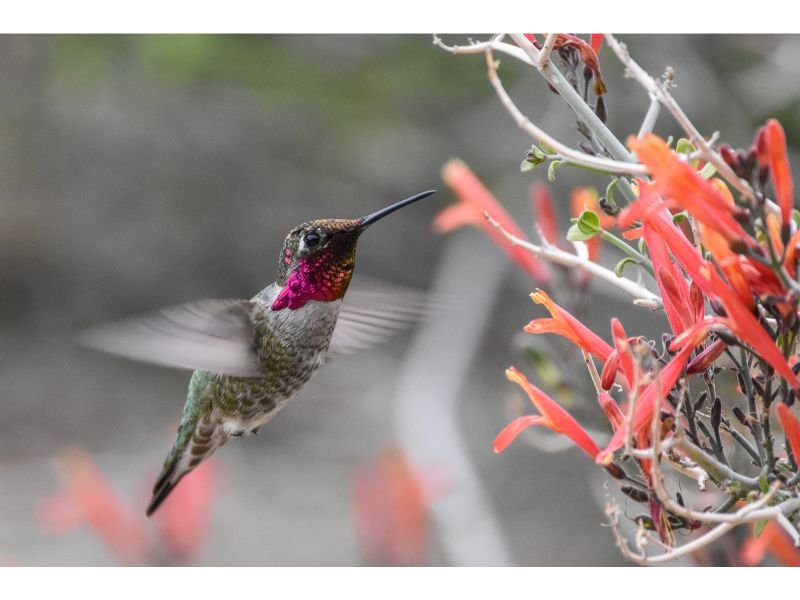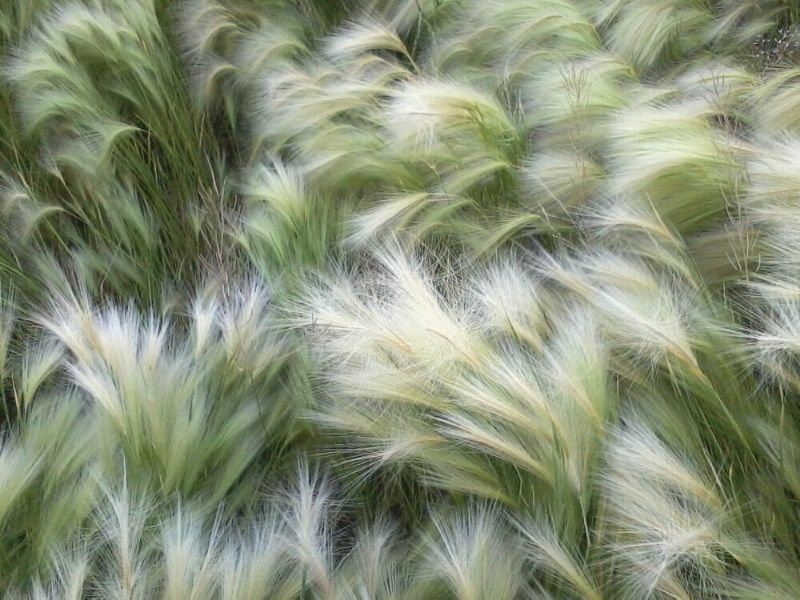Johnson’s Blue Geranium, scientifically known as Geranium ‘Johnson’s Blue,’ is a perennial herbaceous plant that belongs to the Geraniaceae family. Native to the Caucasus region, this stunning flower has captured the hearts of gardeners worldwide with its striking blue blossoms and delicate foliage.
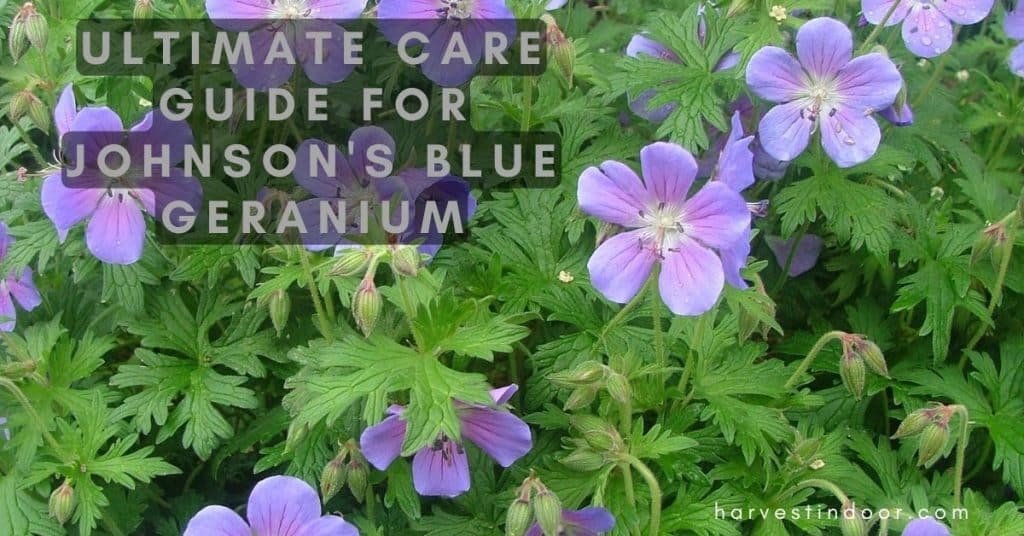
Johnson’s Blue Geranium is more than just a pretty face in the garden. Its resilience and adaptability make it a fantastic choice for both beginners and experienced gardeners. As we delve into the specifics of its growth patterns, you’ll gain valuable insights into how to care for this extraordinary plant.
Table of Contents
Benefits of Growing Johnson’s Blue Geranium

In your journey to becoming a successful Johnson’s Blue Geranium gardener, it’s crucial to understand not just how to care for this plant, but also why you should consider it an essential addition to your garden. This chapter explores the numerous benefits of cultivating Johnson’s Blue Geranium.
1. Dazzling Aesthetic Appeal
The most obvious benefit of growing Johnson’s Blue Geranium is its striking beauty. The vivid azure-blue blossoms are a visual treat, and they contrast beautifully against the plant’s lush green foliage. Whether you choose to plant them as a focal point or as part of a mixed border, these geraniums will add a touch of elegance and charm to your garden.
2. Low Maintenance
One of the significant advantages of Johnson’s Blue Geranium is its ease of care. It is a hardy perennial that can thrive in various soil types and climates. Once established, it requires minimal maintenance, making it an ideal choice for both novice and experienced gardeners. Regular pruning and deadheading are typically the only tasks needed to keep it looking its best.
3. Attracts Pollinators
Johnson’s Blue Geranium is a favorite among pollinators such as bees and butterflies. The nectar-rich flowers provide an essential food source for these beneficial insects. By planting these geraniums, you’re not only enhancing the beauty of your garden but also contributing to the conservation of pollinators, which play a vital role in our ecosystems.
4. Versatility in Garden Design
These geraniums are incredibly versatile in garden design. You can use them as ground cover, border plants, or even in containers and hanging baskets. Their ability to adapt to various growing conditions makes them valuable assets in creating a garden that suits your preferences and needs.
5. Long Blooming Period
Johnson’s Blue Geranium is known for its extended blooming period. From late spring through the summer months, you can expect a profusion of blue flowers that continue to delight. This prolonged display ensures that your garden remains vibrant and inviting for an extended period.
6. Natural Pest Repellent
Geraniums, including Johnson’s Blue Geranium, possess natural insect-repelling properties. Their scent can deter common garden pests like mosquitoes and flies. By strategically placing these geraniums in your garden, you may help reduce pest-related issues without resorting to chemical pesticides.
7. Herbal and Medicinal Uses
Beyond its ornamental value, some geranium species, including certain members of the Geranium genus, have been used for their medicinal properties. While Johnson’s Blue Geranium is not typically used in herbal remedies, its relatives have a history of being used in traditional medicine for their astringent and anti-inflammatory properties.
8. Educational Opportunities
If you have children or are involved in educational programs, Johnson’s Blue Geranium can be an excellent teaching tool. It offers insights into plant biology, pollination, and the importance of biodiversity. Watching pollinators visit the flowers can be a fascinating and educational experience.
By understanding and appreciating these benefits, you can fully grasp the value that Johnson’s Blue Geranium brings to your garden.
Choosing the Perfect Location for Your Geraniums
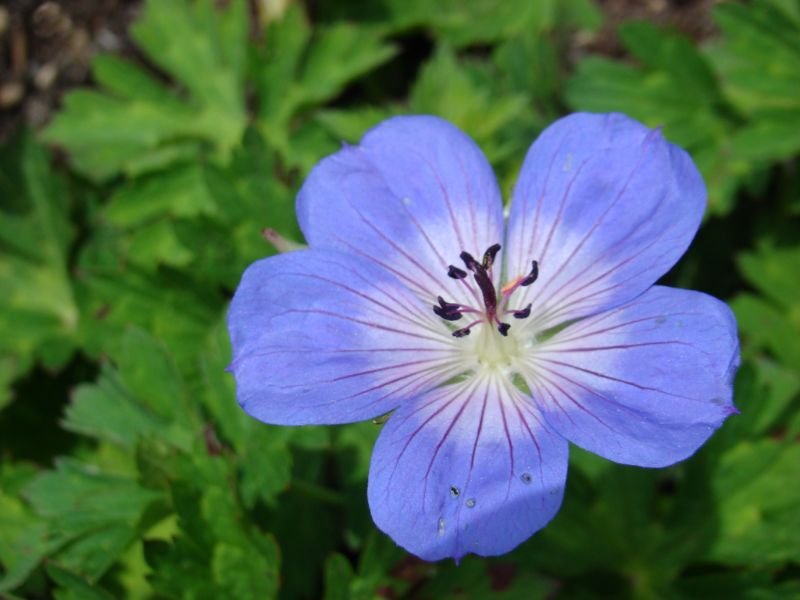
Now that you’re acquainted with the allure and benefits of Johnson’s Blue Geranium, it’s time to delve into the crucial aspect of choosing the right location for your geraniums. The success of your geranium garden largely depends on providing the ideal environment for these beautiful blooms to flourish.
1. Sunlight Requirements
One of the most important factors to consider when planting Johnson’s Blue Geranium is sunlight. These geraniums thrive in well-drained soil and full sunlight. Aim for at least 6-8 hours of direct sunlight each day for the best results. While they can tolerate partial shade, they may not produce as many flowers in shadier spots.
2. Soil Conditions
Geraniums, including Johnson’s Blue Geranium, prefer slightly acidic to neutral soil with good drainage. Well-drained soil prevents waterlogging, which can lead to root rot. Amending your soil with organic matter, such as compost, can improve its structure and water retention while ensuring proper drainage.
3. Spacing and Arrangement
Consider the spacing and arrangement of your geraniums carefully. Plant them approximately 12-18 inches apart to allow for proper air circulation and prevent overcrowding. This spacing ensures that each plant has access to sufficient sunlight and nutrients.
4. Companion Planting
To create a visually appealing garden and encourage biodiversity, consider companion planting with Johnson’s Blue Geranium. Some great companions include lavender, roses, salvia, and daisies. These combinations not only enhance the aesthetics of your garden but also support pollinators and provide natural pest control.
5. Container Gardening
If you have limited garden space or poor soil conditions, don’t despair. Johnson’s Blue Geranium can thrive in containers. Choose a large pot with good drainage, and use a high-quality potting mix. Container gardening allows you to move your geraniums to follow the sun or bring them indoors during harsh weather.
6. Elevation and Terrain
Consider the elevation and terrain of your garden. Geraniums are adaptable, but they do best when planted on level ground or on gently sloping terrain that allows excess water to drain away. Avoid planting them in low-lying areas prone to water accumulation.
7. Protection from Harsh Conditions
While Johnson’s Blue Geraniums are hardy, they may benefit from some protection during extreme weather conditions. Providing some shelter from strong winds and heavy rain can prevent damage to the delicate blooms and foliage.
8. Climate Considerations
Before planting, research your local climate and growing zone. Johnson’s Blue Geranium is known for its cold hardiness, making it suitable for a wide range of climates. However, in extremely hot and arid regions, some shade during the hottest part of the day may be necessary to prevent wilting.
By carefully selecting the right location for your Johnson’s Blue Geraniums and paying attention to these essential factors, you’ll create an environment where they can thrive and showcase their breathtaking beauty.
Soil Preparation and Planting Techniques
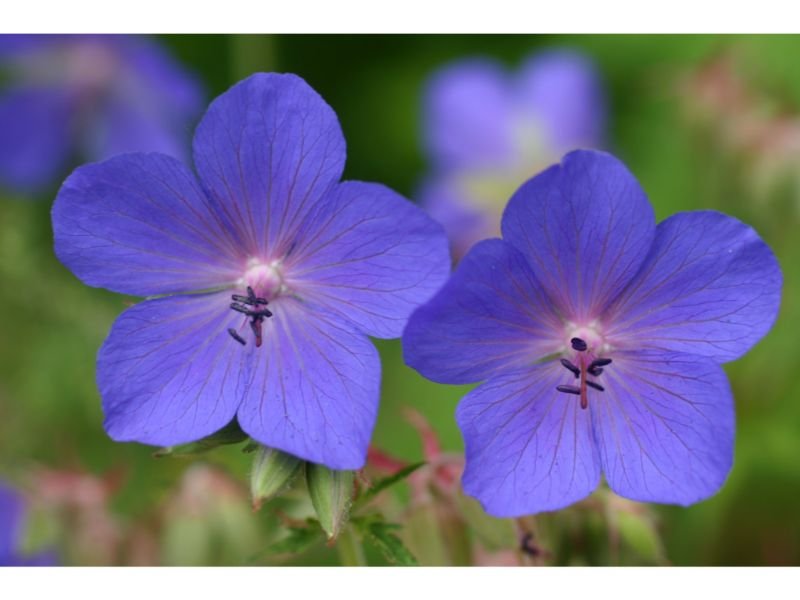
Preparing the soil and planting your Johnson’s Blue Geraniums is a critical step in ensuring their health and vibrancy. In this chapter, we will guide you through the process of soil preparation and the best techniques for planting these stunning flowers.
Soil Preparation
- Soil Testing: Before planting, it’s a good practice to test your soil’s pH and nutrient levels. Johnson’s Blue Geraniums thrive in slightly acidic to neutral soil (pH 6.0-7.0). Soil testing kits or services from local agricultural extension offices can provide valuable insights into your soil’s composition.
- Amending Soil: Based on your soil test results, amend the soil as needed. If your soil is too alkaline (high pH), you can lower it by adding organic matter like peat moss or compost. Conversely, if your soil is too acidic (low pH), you can raise it by adding lime. Aim for well-draining soil with good fertility.
- Improving Drainage: Ensure that the planting area has proper drainage. Johnson’s Blue Geraniums do not tolerate waterlogged soil. If your garden has heavy clay soil, consider incorporating organic matter like compost or sand to improve drainage.
Planting Techniques
- Timing: The ideal time to plant Johnson’s Blue Geraniums is in the spring or early summer when the soil has warmed up and the risk of frost has passed. This gives them a chance to establish their root system before winter.
- Spacing: When planting, space your geraniums 12-18 inches apart to allow for proper air circulation. Proper spacing helps prevent overcrowding, which can lead to disease and decreased flower production.
- Digging Holes: Dig holes that are slightly larger than the root balls of your geraniums. The depth of the hole should accommodate the roots comfortably, ensuring they are neither cramped nor exposed.
- Planting Depth: Position the geraniums at the same depth they were in their nursery pots. Planting them too deep or too shallow can stress the plants. Gently firm the soil around the roots to eliminate air pockets.
- Watering: After planting, water your geraniums thoroughly. This helps settle the soil around the roots and ensures good contact between the roots and the surrounding soil. Keep the soil consistently moist but not waterlogged during the initial establishment period.
- Mulching: Applying a layer of mulch around your geraniums can help conserve moisture, suppress weeds, and maintain even soil temperatures. Organic mulch, such as straw or wood chips, works well. Be sure to leave a small gap between the mulch and the plant’s stem to prevent moisture-related issues.
- Staking (if necessary): In areas with strong winds, tall varieties of Johnson’s Blue Geranium may require staking to prevent bending or breakage. Use stakes that are sturdy but not too conspicuous in your garden design.
Post-Planting Care
- Regular Watering: Continue to water your geraniums regularly, especially during dry spells. They prefer evenly moist soil. However, avoid overwatering, as waterlogged soil can lead to root rot.
- Deadheading: To encourage prolonged flowering, deadhead spends blooms regularly. Remove faded flowers by pinching them off or cutting just above a set of healthy leaves. This redirects the plant’s energy into producing new blooms.
- Fertilization: Fertilize your Johnson’s Blue Geraniums sparingly. Too much fertilizer can lead to excessive foliage growth at the expense of flowers. Use a balanced, slow-release fertilizer according to package instructions.
By following these soil preparation and planting techniques, you’ll provide your Johnson’s Blue Geraniums with the best possible start in your garden.
Watering and Fertilizing Your Johnson’s Blue Geranium
Watering and fertilizing are crucial aspects of caring for your Johnson’s Blue Geraniums. These practices ensure that your plants receive the necessary nutrients and moisture to thrive and produce a profusion of beautiful blue blossoms.
Watering Guidelines
- Consistent Moisture: Johnson’s Blue Geraniums prefer consistently moist soil, but they don’t tolerate waterlogged conditions. Water deeply when the top inch of soil feels dry to the touch. During the hot summer months, this may mean watering more frequently.
- Morning Watering: It’s best to water your geraniums in the morning. Morning watering allows the foliage to dry before evening, reducing the risk of fungal diseases. Avoid overhead watering if possible, as it can wet the leaves.
- Water at the Base: Direct the water at the base of the plants rather than overhead. This helps prevent fungal issues and ensures that the roots receive the moisture they need.
- Drought Tolerance: Johnson’s Blue Geraniums are relatively drought-tolerant once established. However, during extended dry periods, it’s essential to provide supplemental water to prevent stress and maintain flower production.
- Mulch: Applying a layer of mulch around your geraniums helps retain soil moisture and reduces the frequency of watering. Maintain a mulch layer of about 2-3 inches, being careful not to let it touch the plant’s stems.
Fertilizing Guidelines
- Moderate Fertilization: Johnson’s Blue Geraniums do not require heavy feeding. Fertilize them sparingly to avoid excessive foliage growth at the expense of flowers. Use a balanced, slow-release fertilizer in early spring, following package instructions.
- Organic Fertilizers: If you prefer organic options, you can use well-rotted compost or a balanced organic fertilizer. These options provide a gradual release of nutrients and contribute to soil health.
- Avoid High-Nitrogen Fertilizers: High-nitrogen fertilizers can lead to excessive leafy growth. While some foliage is necessary for photosynthesis, too much can inhibit flower production. Look for a fertilizer with a balanced N-P-K ratio.
- Fertilize After Flowering: After the first flush of flowering in early summer, consider applying a light dose of fertilizer to support the development of new blooms. Follow the recommended rate on the fertilizer package.
- Stop Fertilizing in Late Summer: Reduce or stop fertilization in late summer to encourage your geraniums to gradually prepare for winter dormancy. Fertilizing too late in the season can stimulate new growth vulnerable to frost damage.
- Container Plants: If you’re growing Johnson’s Blue Geraniums in containers, they may benefit from more frequent feeding. Container-grown plants rely on the nutrients provided by the potting mix, which can become depleted over time. Use a slow-release or liquid fertilizer specifically designed for container plants.
Monitoring and Adjustment
Regularly monitor your geraniums for signs of nutrient deficiencies or overwatering. Yellowing leaves, poor flower production, or stunted growth can indicate nutrient issues. Adjust your watering and fertilizing practices accordingly to address any problems.
Remember that every garden is unique, and the specific needs of your Johnson’s Blue Geraniums may vary based on factors like soil type, climate, and local conditions. Observing your plants and making adjustments as needed will help you achieve the best results.
Pruning and Deadheading for Healthy Growth

Pruning and deadheading are essential practices for maintaining the health and beauty of your Johnson’s Blue Geraniums. In this chapter, we will explore the techniques and benefits of these processes.
Pruning Johnson’s Blue Geraniums
- Spring Pruning: In early spring, before new growth emerges, prune your Johnson’s Blue Geraniums to remove any dead or damaged stems from the previous year. Use clean, sharp pruners to make clean cuts just above a set of healthy leaves or buds. This stimulates new growth and helps maintain an attractive shape.
- Cutting Back After Flowering: After the initial flush of summer flowering, consider cutting back the plants by about one-third to one-half of their height. This encourages a second wave of blooms later in the season and prevents the plants from becoming leggy.
- Maintaining Shape: Regularly trim any straggly or overgrown stems throughout the growing season to maintain a compact and bushy appearance. Pruning in this way encourages a more balanced distribution of flowers and foliage.
- Removing Spent Foliage: As leaves age and show signs of wear, remove them to improve air circulation and reduce the risk of fungal diseases. Removing yellowing or spotted leaves also enhances the plant’s overall appearance.
Deadheading Johnson’s Blue Geraniums
Deadheading is the practice of removing spent or faded flowers to encourage continuous blooming and prevent the plant from putting energy into seed production. Here’s how to deadhead your Johnson’s Blue Geraniums effectively:
- Regular Inspection: Routinely check your geraniums for spent blooms. These can be identified by their faded color and shriveled appearance.
- Pinching or Cutting: Use your fingers or clean, sharp pruners to pinch or cut the flower stem just above a set of healthy leaves or buds. Be sure to remove the entire flower head, including the stem, to prevent seed formation.
- Frequent Deadheading: For optimal results, deadhead your geraniums as soon as you notice faded blooms. This encourages the plant to redirect its energy into producing new flowers rather than seed pods.
Benefits of Pruning and Deadheading
- Prolonged Blooming: Pruning and deadheading promote continuous blooming throughout the growing season. This means you’ll enjoy a more extended period of vibrant blue flowers in your garden.
- Improved Aesthetics: Regular maintenance through pruning and deadheading keeps your geraniums looking neat and tidy. Removing spent blooms and faded foliage enhances the overall visual appeal of your garden.
- Prevention of Disease: Removing dead or decaying plant material reduces the risk of fungal diseases. Good air circulation around the plant also plays a crucial role in disease prevention.
- Energy Efficiency: By preventing seed formation through deadheading, your geraniums invest their energy in producing more flowers and growing a healthier root system. This results in a more robust and floriferous plant.
- Controlled Growth: Pruning helps maintain the desired shape and size of your geraniums. It prevents them from becoming leggy or overcrowded, ensuring that each plant receives adequate sunlight and nutrients.
- A Second Flush of Blooms: Pruning back your geraniums after the initial flowering period encourages a second round of blossoms later in the season. This extends the period of colorful displays in your garden.
By incorporating regular pruning and deadheading into your geranium care routine, you’ll reap the rewards of healthier, more beautiful plants that continue to brighten your garden with their stunning blue blossoms.
Dealing with Common Pests and Diseases
As a dedicated gardener, it’s essential to be vigilant and proactive when it comes to protecting your Johnson’s Blue Geraniums from common pests and diseases. In this chapter, we will identify potential threats and provide strategies for prevention and management.
Common Pests
- Aphids: Aphids are small, soft-bodied insects that can cluster on the undersides of leaves and flower buds. They feed on plant sap, causing leaves to curl and distort. To control aphids, use a strong stream of water to dislodge them or introduce natural predators like ladybugs.
- Slugs and Snails: These mollusks can leave holes in geranium leaves and flowers. To deter them, create barriers using crushed eggshells or diatomaceous earth. You can also set up traps with beer to lure and drown them.
- Caterpillars: Caterpillars may chew on geranium leaves. Handpick them or use biological controls like Bacillus thuringiensis (Bt) if their numbers become problematic.
- Spider Mites: These tiny arachnids can create fine webs on leaves and suck plant juices, causing stippling and leaf discoloration. Regularly misting your geraniums with water can deter spider mites, or you can use insecticidal soap for severe infestations.
Common Diseases
- Powdery Mildew: Powdery mildew appears as a white, powdery substance on leaves. Ensure proper air circulation and avoid overcrowding your geraniums. Fungicidal sprays or neem oil can help control mildew if it becomes prevalent.
- Botrytis Blight (Gray Mold): This fungus causes brown or gray spots on flowers and foliage. Remove affected plant parts promptly, and avoid overhead watering to reduce moisture on leaves.
- Root Rot: Root rot occurs when soil remains excessively wet. To prevent this, ensure well-drained soil and avoid overwatering. In severe cases, you may need to replant your geraniums in fresh soil.
- Bacterial Wilt: Bacterial wilt can cause wilting, yellowing, and wilting leaves. There is no cure for bacterial wilt, so prevention through good sanitation and avoiding overhead watering is crucial.
Prevention Strategies
- Healthy Soil: Start with well-drained, healthy soil. Proper soil preparation is your first line of defense against diseases.
- Proper Watering: Avoid overwatering, which can lead to root rot and other moisture-related issues. Water at the base of the plants in the morning.
- Pruning and Deadheading: Regularly remove dead or diseased plant material through pruning and deadheading to prevent the spread of pathogens.
- Good Air Circulation: Plant your geraniums with adequate spacing to ensure good air circulation, which reduces the risk of fungal diseases.
- Sanitation: Keep your garden clean by removing fallen leaves and debris, which can harbor pests and diseases.
- Natural Predators: Encourage natural predators like ladybugs and lacewings to help control pest populations.
- Quarantine New Plants: If you introduce new plants to your garden, consider quarantining them for a few weeks to ensure they are disease-free before planting them near your geraniums.
Treatment Options
In some cases, despite your best prevention efforts, pests and diseases may still affect your geraniums. If this happens, here are some treatment options:
- Insecticidal Soap: Use insecticidal soap for minor pest infestations, like aphids or spider mites.
- Fungicides: Fungicidal sprays can be effective against diseases like powdery mildew and gray mold. Follow the label instructions carefully.
- Biological Controls: Release natural predators like ladybugs to help control aphid populations.
- Neem Oil: Neem oil can serve as a broad-spectrum pest and disease control option. It acts as both an insecticide and a fungicide.
- Consult a Garden Center: If you’re unsure about the best course of action, consult your local garden center or extension office for guidance and product recommendations.
By remaining vigilant, practicing preventive measures, and knowing how to identify and address common pests and diseases, you can help your Johnson’s Blue Geraniums thrive and continue to grace your garden with their beautiful blue blossoms.
Propagating Johnson’s Blue Geranium
Propagating Johnson’s Blue Geranium can be a rewarding way to expand your garden or share the beauty of this remarkable plant with friends and fellow garden enthusiasts. In this chapter, we’ll explore various methods of propagating these delightful geraniums.
Propagation by Division
Dividing Johnson’s Blue Geraniums is one of the most common and straightforward methods of propagation. This technique is ideally performed in early spring or late summer when the plants are actively growing. Here’s how to do it:
- Prepare the Plant: Choose a healthy, established geranium plant with multiple stems and a robust root system.
- Lift the Plant: Carefully dig up the entire plant, taking care not to damage the roots.
- Divide the Roots: Use a clean, sharp knife or garden spade to divide the root ball into smaller sections. Each division should have at least one stem and a portion of the root system.
- Replant: Plant the divided sections in their new locations, ensuring that they are at the same depth as they were originally. Water thoroughly after planting.
- Maintain and Water: Continue to care for the divisions as you would with established plants. Keep the soil consistently moist until they become established.
Propagation by Cuttings
Propagation by cuttings is another effective method for creating new Johnson’s Blue Geranium plants. This technique is typically performed in late spring or early summer when the plant is actively growing. Here’s how to do it:
- Select Healthy Stems: Choose a healthy, non-flowering stem from the parent plant. The stem should be about 4-6 inches long and have at least a few sets of leaves.
- Prepare the Cutting: Use clean, sharp scissors or pruning shears to make a clean cut just below a leaf node (where leaves attach to the stem). Remove any leaves from the lower half of the cutting.
- Rooting Medium: Dip the cut end of the cutting in a rooting hormone powder to encourage root development. Plant the cutting in a small pot filled with a well-draining rooting medium, such as a mix of perlite and potting soil.
- Maintain Humidity: Cover the cutting and pot with a plastic bag or a plastic dome to create a humid environment. Place the cutting in indirect sunlight.
- Watering: Keep the soil consistently moist but not waterlogged. Check the cutting regularly for signs of root development.
- Transplanting: Once the cutting has developed a healthy root system (usually in a few weeks), transplant it into a larger pot or directly into your garden.
Propagation by Seed
While Johnson’s Blue Geraniums can be grown from seeds, this method can be more challenging than propagation by division or cuttings. However, it can be rewarding if you want to grow a large number of plants or experiment with hybridization. Here’s how to propagate them from seeds:
- Seed Collection: Allow your geraniums to produce seed pods after flowering. Harvest the seed pods when they turn brown and begin to split open.
- Seed Extraction: Carefully open the seed pods and collect the seeds. Store them in a cool, dry place until you’re ready to sow them.
- Sowing Seeds: Plant the seeds in seed trays or small pots filled with a well-draining seed-starting mix. Press the seeds lightly into the soil and cover them with a thin layer of soil.
- Germination: Keep the soil consistently moist and maintain a temperature of around 70-75°F (21-24°C) to encourage germination. Germination can take several weeks.
- Transplanting: Once the seedlings have developed several true leaves, transplant them into individual pots or directly into your garden.
Propagation by seed is a slower process compared to division or cuttings, but it allows for genetic diversity and the potential for new and unique plant variations.
Propagation is an excellent way to share the beauty of Johnson’s Blue Geraniums and expand your garden. Whether you choose division, cuttings, or seeds, each method has its advantages and can lead to a garden filled with these stunning blue blossoms.
Conclusion
Cultivating Johnson’s Blue Geraniums is a journey filled with wonder, growth, and connection to the natural world. It’s a testament to your dedication as a gardener and your appreciation for the beauty of these remarkable blue blossoms.
As you continue on your gardening journey, may you find fulfillment in each season, joy in every bloom, and a deep sense of connection to the earth. Cherish the moments spent in your garden, and let the beauty of Johnson’s Blue Geraniums inspire you to nurture and celebrate the wonders of the natural world.

Gardening is my passion and growing plants indoors has always been a stress relief for me. Grow a banana tree in my apartment once (although failed to produce bananas).

